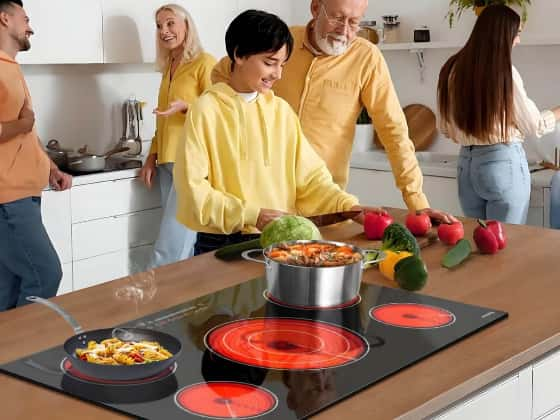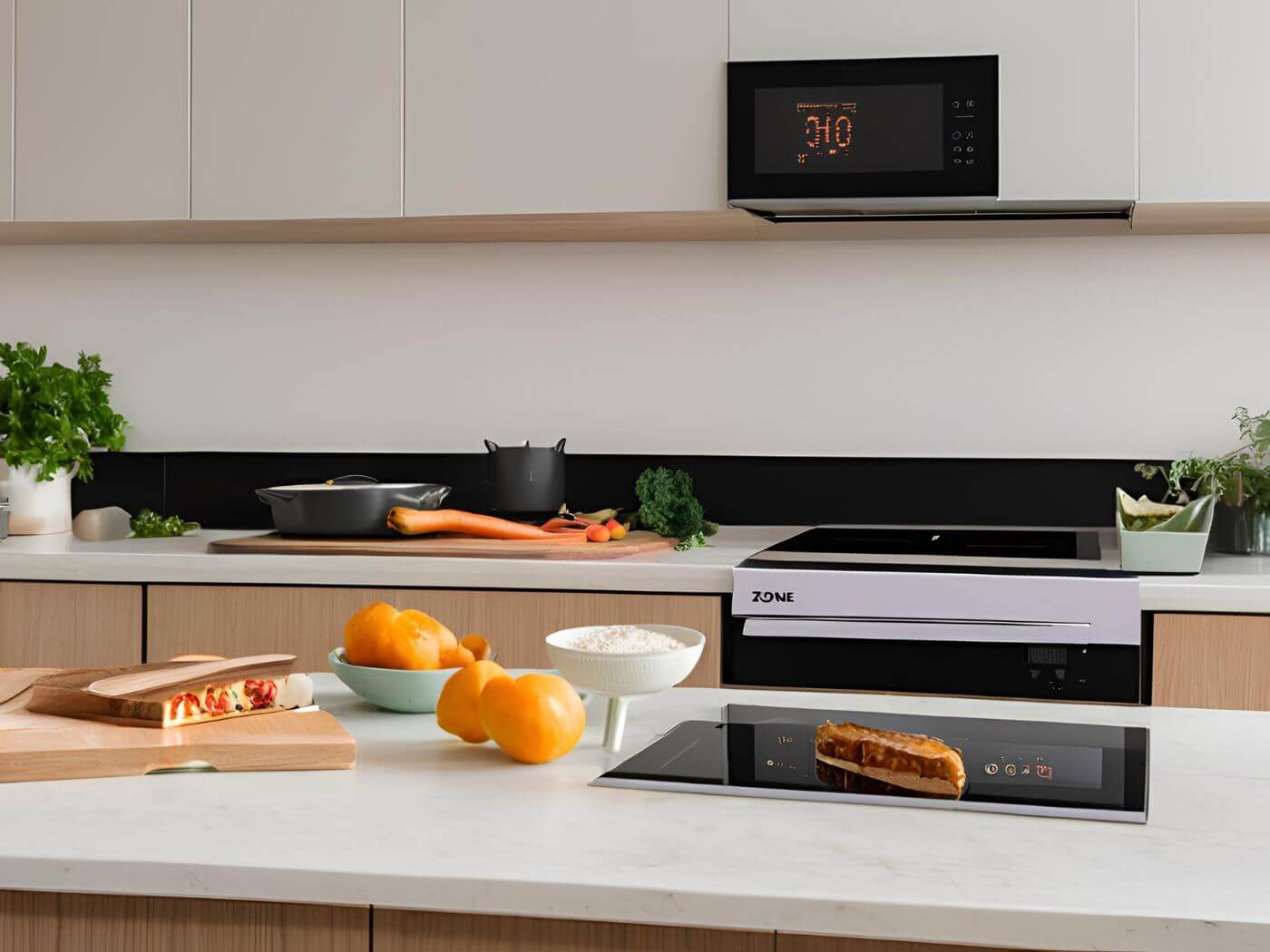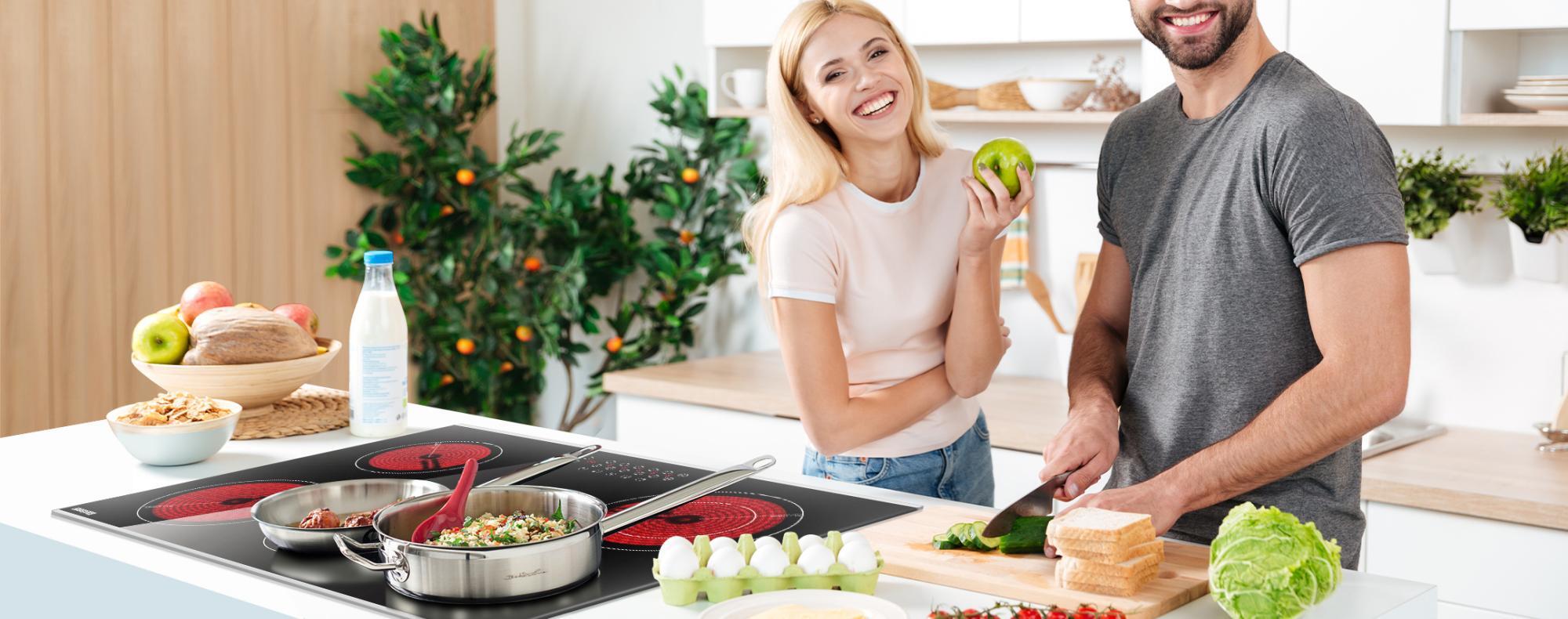
Choosing the right cookware for an induction cooktop
Induction cooktops are technological marvels, providing efficient and precise cooking on sleek, easy-to-clean surfaces. However, not all cookware works with this technology. As an ardent home chef, I understand the significance of choosing the correct pots and pans to ensure peak performance and flawless cooking experiences.
The key to induction cooking is the cookware's material. Induction cooktops use magnetic fields to generate heat, hence cookware must be composed of ferromagnetic materials like cast iron or magnetic stainless steel. These materials allow the magnetic field to induce an electric current, which produces heat within the cookware.
Induction cooktops have the advantage of immediately detecting compatible cookware. The cooktop's sensors detect the presence of compatible cookware and adjust the heat accordingly. This not only promotes effective energy transfer, but it also improves safety by preventing accidental heating when no cookware is used.
How to detect if cookware is suitable for induction cooking
The Magnet Test: One of the easiest ways to check if your cookware is induction-friendly is to perform the magnet test. Simply take a strong magnet and place it on the bottom of the pot or pan. If the magnet clings firmly to the surface, it means the cookware is made of a ferromagnetic material and is compatible with induction cooktops.
Visual Inspection: Many manufacturers now label their cookware as "induction-ready" or display an induction symbol on the bottom or packaging. Keep an eye out for these indicators when shopping for new cookware.
Material Identification: Cast iron, enameled cast iron, and magnetic stainless steel are generally safe choices for induction cooking. Aluminum, copper, and non-magnetic stainless steel cookware are not suitable for induction cooktops.
Testing cookware on a 2 burner induction cooktop
Once you've identified potential induction-compatible cookware, it's time to put it to the test on your 2 burner induction cooktop. Here's how you can do it:
- Prepare the Cooktop: Ensure that your induction cooktop is clean and free from any debris or spills. This will prevent any interference with the cooktop's sensors and ensure accurate detection of your cookware.
- Place the Cookware: Position the cookware you want to test on one of the burners. Make sure the bottom of the cookware is flat and in full contact with the cooktop's surface.
- Turn on the Burner: Turn on the burner and set it to a low or medium heat setting. If the cookware is compatible, the burner should immediately recognize it, and the cooktop's display should indicate that it's heating up.
- Observe and Adjust: If the cookware is heating up evenly, it's a clear sign that it's suitable for induction cooking. If not, you may need to try a different piece of cookware or adjust the heat setting to find the optimal cooking temperature.
It's important to note that some cookware may have a slightly uneven heating pattern due to variations in the material or construction. This is normal and shouldn't necessarily disqualify the cookware from being used on an induction cooktop.
Conclusion
Mastering the art of cooking with a two burner induction cooktop begins with choosing the correct cookware. By following the ideas and practices provided in this guide, you will be able to accurately identify induction-compatible cookware and maximize the capabilities of your cooktop.






